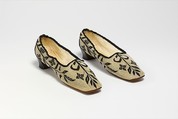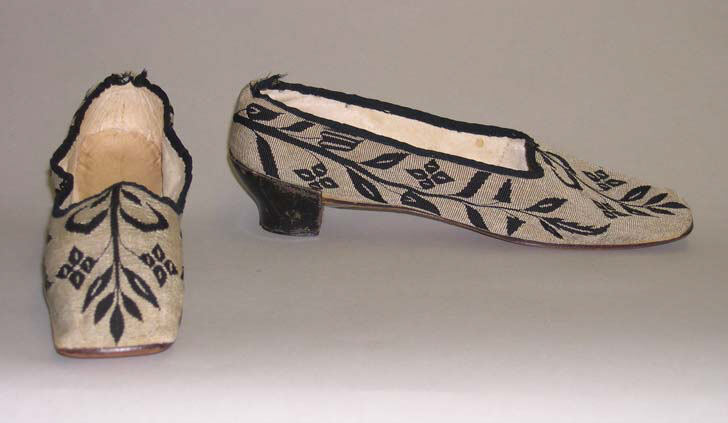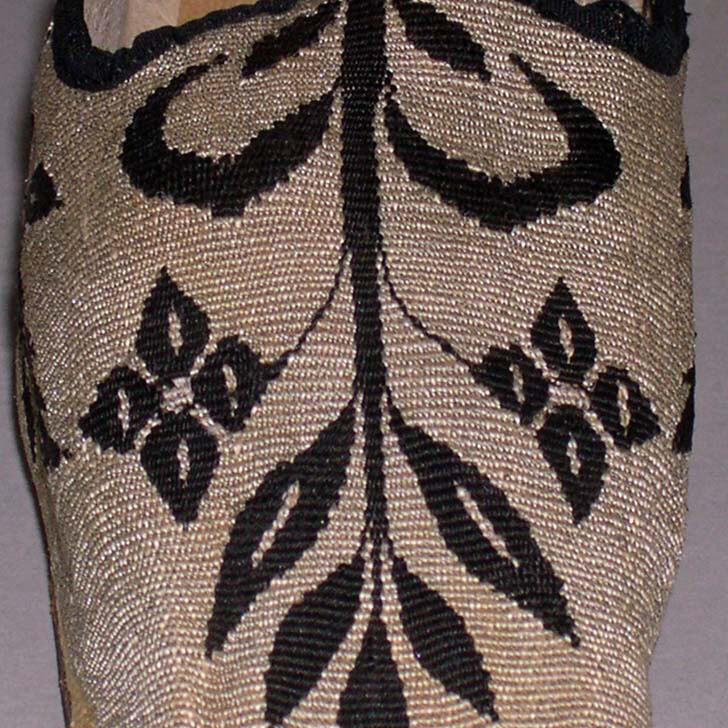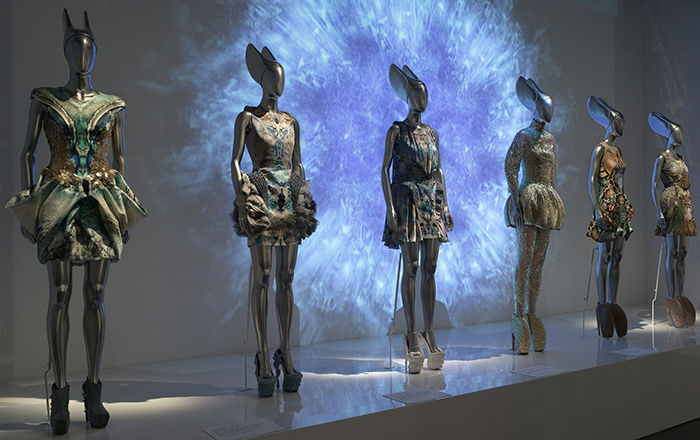Shoes
Not on view
The elegant black foliate patterned textile of these shoes was woven by hand, á la disposition, to conform to the pattern piece of the uppers. After the Crimean War, textiles with this tapestry weave were exported for reticules, slippers, and even upholstery. In this instance, it is possible that the textile with the woven pattern of uppers, rather than the completed slippers, was imported to this country to be cobbled together here. The ballet-slipper-like flats, with their square toes, were a style that persisted throughout the first half of the nineteenth century. These shoes, like many women's light slippers of the day, continued to be made on a straight last, or shoe form, with identical right and left sides.
This image cannot be enlarged, viewed at full screen, or downloaded.
This artwork is meant to be viewed from right to left. Scroll left to view more.





